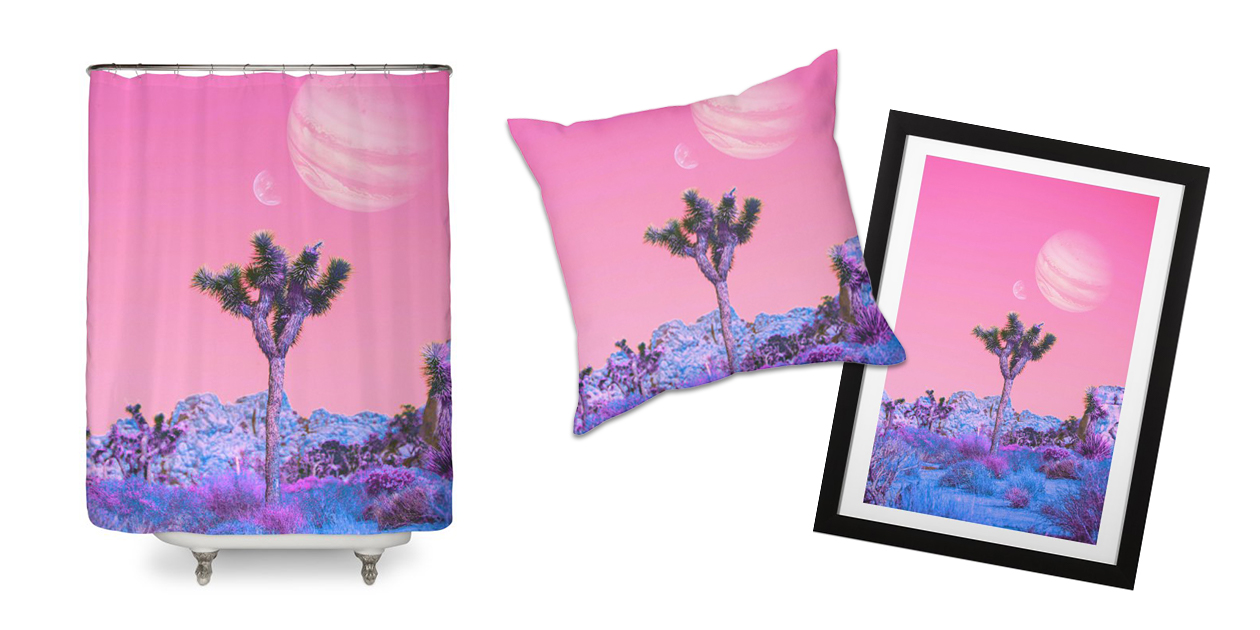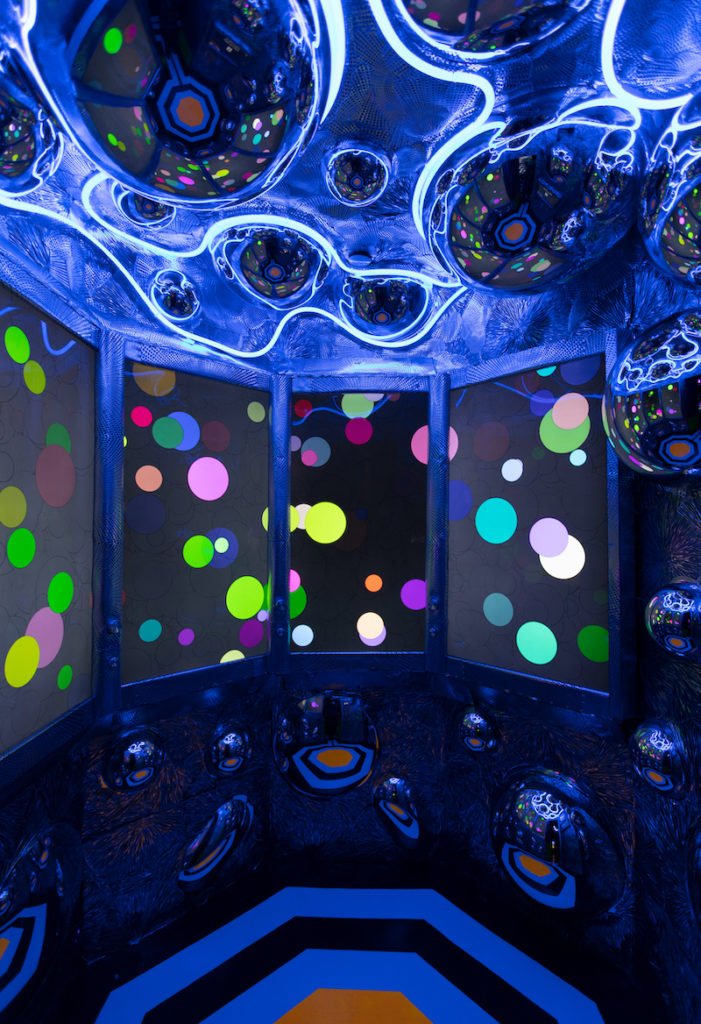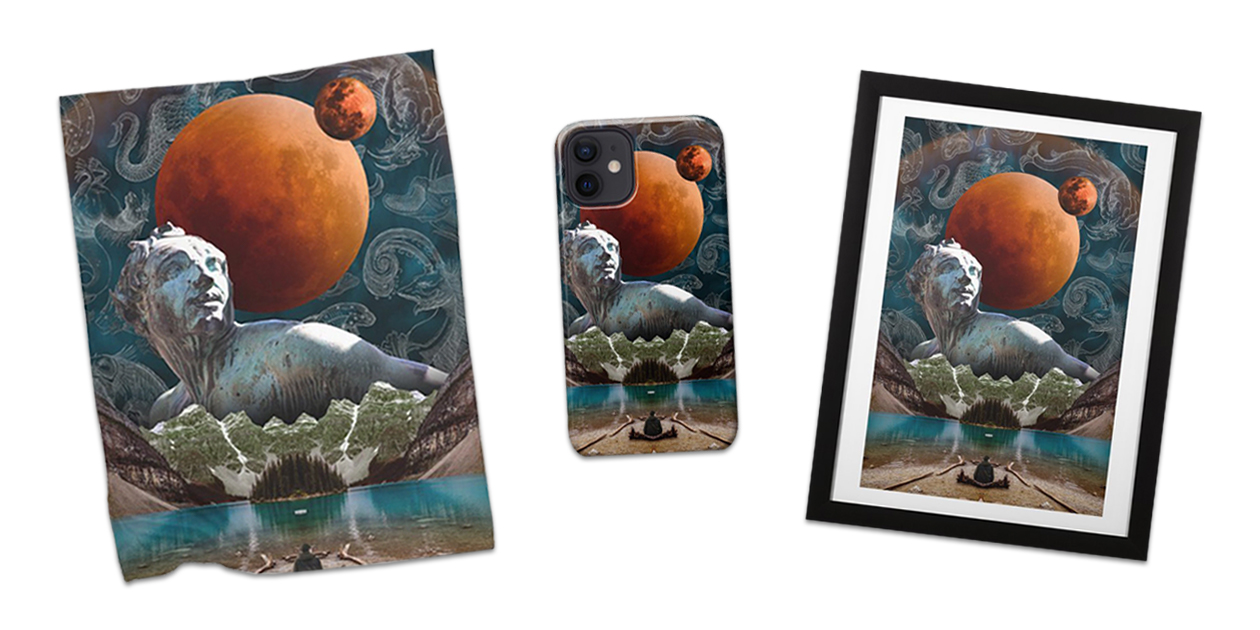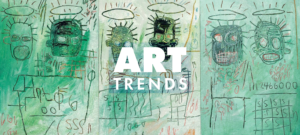Last time, we discussed Jean-Michel Basquiat’s Warrior potentially becoming the most expensive Western work of art sold at auction in Asia. In March, that potential became a reality after the painting sold for approximately $41.8 million. This week, however, we’re shifting our focus from the art market to innovative trends in art institutions. Let’s talk about immersive art experiences!
Interestingly, immersive exhibits aren’t new. Yayoi Kusama’s Infinity Mirror installations have been popular since debuting in the ‘60s. You may have even seen photos from her exhibits on dating profiles, Instagram, and other social-media apps. The public’s interest in interactive exhibits has resulted in the development of art spaces solely dedicated to immersive art experiences. Today, the number of immersive exhibits has greatly increased within museums. Knowing that immersive exhibits have been around for decades, why are they now becoming more prevalent?

Immersive Art Experiences to Look Out For
Suddenly, several immersive exhibits have popped up in 2021. These shows are hot commodities, with museums vying to be the next spot the exhibits visit. Here are some of the most recent immersive exhibits making a buzz.
Kusama’s Retrospective Exhibit
Like I said before, Yayoi Kusama is not new to immersive experiences. Each of her Infinity Mirror rooms vary in what they feature—some with lights, others with her signature dots all over them. In 2020, The Broad—a contemporary art museum in Los Angeles—put Kusama’s most recent Infinity Mirror installation online. This digitized version of the exhibit allowed for visitors to get the full experience in a virtual environment, since COVID-19 restrictions seriously limited the time guests could stay in the physical exhibit. This year, Kusama has a retrospective in Berlin, Germany that will feature a new Infinity Mirror room.
Immersive Van Gogh Exhibit Chicago
The first Van Gogh immersive exhibit I became aware of was Immersive Van Gogh Exhibit Chicago this year. However, multiple Van Gogh immersive exhibits exist, the first opening as early as 2001. With multiple immersive experiences involving Van Gogh’s work, we can see that the obsession with these exhibits is less of a coincidence and more of a trend. This type of Van Gogh experience existed 20 years ago! Yet, suddenly they’re popping up all over.
Dalí, the endless enigma
A new exhibit, Dalí, the endless enigma, starts May 1st this year and runs until January 2022. The exhibit will take place at L’atelier Des Lumières, the first digital art museum in Paris. This immersive experience is true to the Surrealist desire to place the viewer in a dreamlike landscape. With Salvador Dalí’s works coming alive, it goes far beyond the experience of watching a Surrealist film. This surreal art experience is a fascinating exploration of how digital immersive art experiences can work across movements. Hopefully, those of us outside of Europe will be able to travel to view this exhibit before its end. If not, fingers crossed that it travels elsewhere.
Goodnight House
In an interesting shift, immersive art exhibits seem to be expanding beyond the masters and into children’s literature. The Goodnight House immersive exhibit features work by 14 contemporary artists who recreate the setting of the popular children’s book Goodnight Moon. Held at Fort Makers, an artist-run space in New York City, the exhibit references the book’s illustrations in its commissioned art as well as its design. This exhibit runs until May 27th this year.
With the emergence of these exhibits, the way we experience art comes into question. Immersive art exhibits challenge how we’re taught art should be experienced (from a Western perspective). So, are immersive exhibits the best way to experience art? That’s where immersive art spaces come into play.
Art Spaces Dedicated to Immersive Exhibits
I say “immersive art spaces” because they don’t operate in the same ways that galleries and museums do. The formation of these spaces revolve around not only changing the art viewing experience, but also the desire to explore ways to make art more accessible. Each of these spaces holds a common belief that community can be established through people participating in an interactive art experience.
The immersive art space flips the idea of art museums and galleries as temples. This is a phenomenon scholars discuss in museum history. Art museums and galleries create an environment similar to a temple. Guests can’t touch items, believe they should remain quiet and respectful, and are less likely to interact with others outside of their group. Looking at art then becomes akin to silent worship. Interactive art opens up a more joyous and less serious environment.
Artechouse

My first immersive art experience took place at Artechouse in Washington, D.C. in 2017. The exhibit was XYZT: Abstract Landscapes, a fascinating digital art experience. It was the first time I visited an immersive space that wasn’t a history or science museum. Artechouse focuses on the importance of blending art and technology by showing the work of new media artists. This art space changes the way people think about art, especially as it has its own app to enhance the experience. It takes the video components of art exhibits to a completely new level. It goes behind the box-like theaters in museums where people can sit and watch films.
TeamLab

TeamLab expands perceptions of art through digital media. Its immersive experiences change the relationship between people in an art space as it eliminates the boundaries of art. There is no frame, there is no single look, and there are multiple ways to find meaning as works of art engage your body and mind. The space’s focus is on engaging multiple senses when viewing art. There’s no better way to do so than creating large-scale interactive exhibits that span the entire viewing space.
Meow Wolf

Another art space dedicated to interactive exhibits is Meow Wolf. Unlike Artechouse, Meow Wolf displays multimedia immersive exhibits, not exclusively digital. The founders of Artechouse dedicate the space to community involvement, and believe that giving back to and supporting communities is important. Meow Wolf also supports emerging artists and art communities by offering them actual professional wages. Meow Wolf has multiple locations across the United States.
Factory Obscura

Last, but not least, is Factory Obscura. Located in Oklahoma City, Factory Obscura’s focus also revolves around building community. They believe that through their interactive exhibits, guests are able to connect with one another during the experience, which brings them together. Factory Obscura is also about supporting artists. Like Meow Wolf, they believe in offering artists a wage that allows them to thrive and focus on making art. In response to the pandemic, they’ve also developed experiences that folks can have at home. For example, they offer coloring pages that encourage artist-audience collaboration. There’s also an embroidery kit available for folks to complete at home. Factory Obscura believes that community building, interaction, and the immersive experience can be transformative.
Why Are Immersive Art Experiences Catching On?
So, let’s dive into the reasons why immersive art exhibits are popping up everywhere. One possibility is the turn to digital during the pandemic. Digital art has been catching on, especially after a major auction house recently sold the first-ever digital-only artwork. In a sense, the pandemic has expanded what museums, galleries, and other art spaces can do with technology.

Another possibility is that the world is slowly transitioning into more public activity with the distribution of the COVID-19 vaccine. Museums are frequently looking for ways to reach a wider audience. This importance is magnified by the financial losses suffered during the pandemic. Museums need a new draw to appeal to a wider audience to increase their earnings and recover.
That, however, is the institutional reason immersive art exhibits are gaining popularity. For those outside of art institutions, the appeal certainly has to do with the increased desire for any sort of human interaction. Attendance of interactive exhibitions allows for what we’ve longed for—the ability to connect with more people. Although safety is still in question, and none of us can be sure where we’ll be by the time new immersive exhibitions begin, our longing for the ability to connect seems to be the driving force of public interest.


